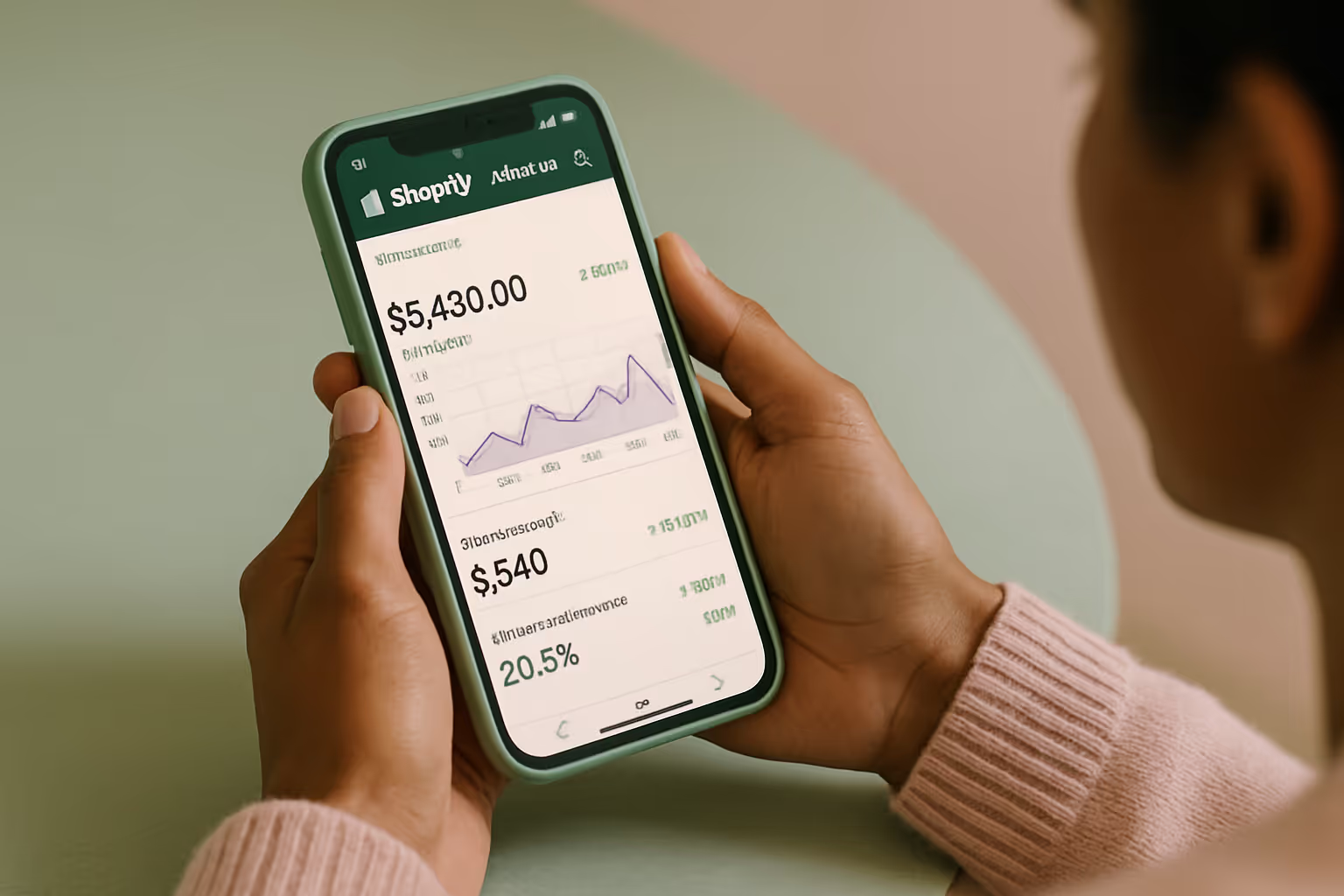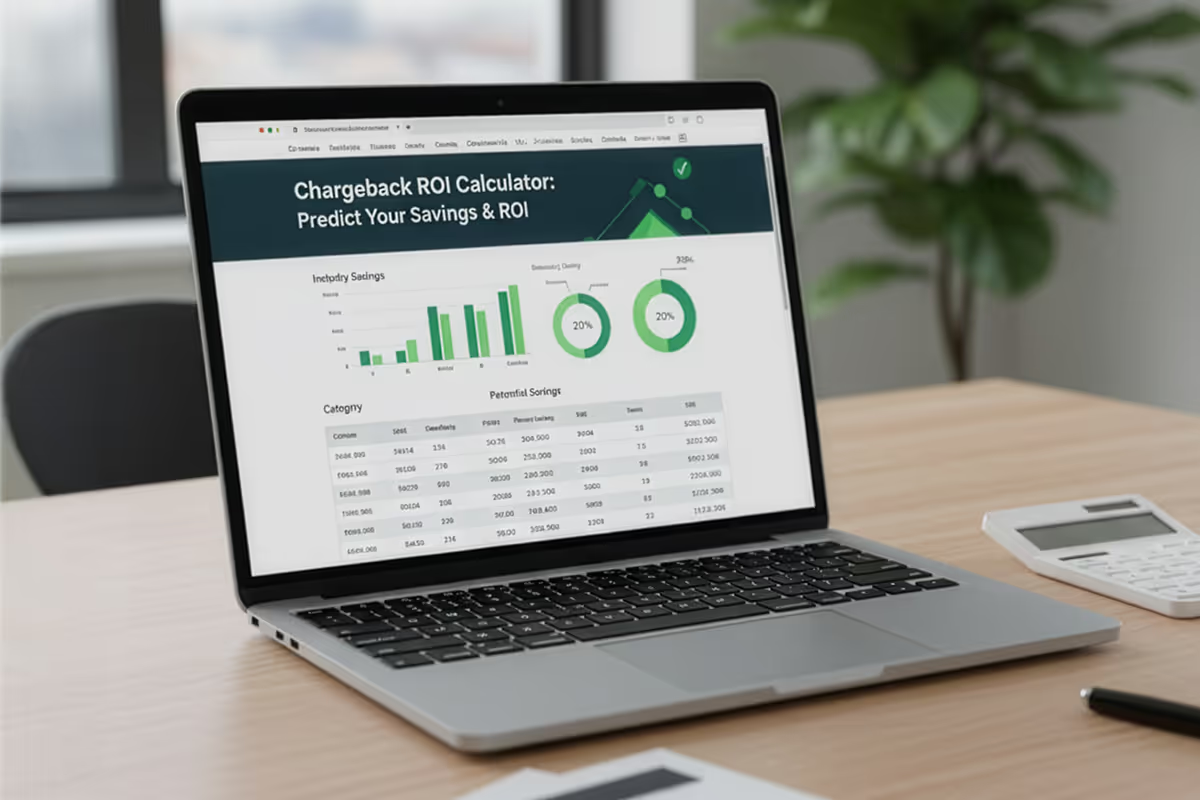How to Use Shopify Analytics to Improve Shop's Performance? KPI Dashboard

Running a successful Shopify store requires more than just listing products and hoping for sales. With Shopify merchants generating over $700 billion in sales since the platform's launch, it's clear that data-driven decisions play a key role in long-term success.
Behind every thriving e-commerce business is a strategic approach to data analysis that drives better outcomes.
If you're looking to scale efficiently, it's essential to learn how you can use Shopify Analytics to improve shop's performance. This powerful tool can help transform an underperforming store into a conversion machine when used to its full potential.
Using Shopify Analytics for Shop Performance Improvements
Stop guessing. Start scaling. These are the KPIs that separate average stores from top performers and exactly how to act on them.
Shopify's sales reports provide detailed breakdowns of your revenue streams, allowing you to identify your best-selling products, peak sales periods, and most valuable customer segments.
Identifying Top Performers
The "Sales by product" report reveals which items generate the most revenue. This information helps:
- Guide inventory decisions
- Inform marketing strategy
- Highlight potential opportunities for similar products
Don't just look at total revenue, examine profit margins as well. Sometimes products with moderate sales but higher margins contribute more to your bottom line than high-volume, low-margin items.
Analyzing Sales Over Time
Temporal patterns in your sales data can inform crucial business decisions. The "Sales over time" report allows you to:
- Identify seasonal trends
- Spot day-of-week or time-of-day patterns
- Measure the impact of marketing campaigns
For example, if you notice sales consistently spike on weekends, you might schedule your promotional emails or social media posts to capitalize on this pattern.
Similarly, understanding which products sell best on Shopify in different seasons can help you plan inventory and promotions accordingly.
Customer Segmentation Analysis
The "Sales by customer" report helps identify your most valuable customers based on:
- Lifetime spend
- Purchase frequency
- Average order value
This information enables targeted marketing efforts toward your most profitable customer segments. Consider creating special loyalty programs or exclusive offers for your top customers to encourage continued engagement.
Optimizing with Traffic Reports
Understanding where your visitors come from and how they interact with your store is crucial for optimizing marketing efforts and improving user experience.
Traffic Source Analysis
Shopify's "Acquisition" reports show exactly how visitors find your store:
- Direct traffic (typing your URL)
- Organic search (finding you through search engines)
- Social media referrals
- Email campaigns
- Paid advertising
Knowing which channels drive the most traffic, and more importantly, which drive the most conversions, helps allocate your marketing budget effectively.
If social media drives significant traffic but few sales, you might need to reassess your social strategy or improve landing pages for those visitors.

Behavior Analysis
The "Behavior" reports reveal how visitors interact with your store:
- Most viewed pages
- Top landing pages
- Exit pages
- Navigation patterns
If certain product pages have high view counts but low conversion rates, they may need optimization. Perhaps the product descriptions lack detail, the images aren't compelling, or the pricing strategy needs adjustment.
Similarly, pages with high exit rates might contain friction points that cause visitors to leave. Common issues include confusing navigation, slow loading times, or a lack of clear calls-to-action.
Mobile vs. Desktop Performance
With mobile commerce continuing to grow, comparing performance between devices is essential. Shopify analytics allows you to segment traffic and conversion data by device type.
If your mobile conversion rate lags significantly behind desktop, your site might need mobile optimization. Common mobile-specific issues include:
- Touch targets that are too small
- Forms that are difficult to complete on smaller screens
- Text that's hard to read without zooming
- Images that load slowly on mobile connections
Leveraging the Shopify KPI Dashboard
A well-organized dashboard makes it easier to monitor performance at a glance and quickly identify areas needing attention. Shopify KPI dashboard templates can help streamline this process, giving you customized views of your most important metrics.
Customizing Your Dashboard
Tailor your Shopify analytics dashboard to display the metrics most relevant to your business goals:
- From your Analytics page, click "Customize" in the top right corner
- Select the reports you want to add to your dashboard
- Arrange them in order of importance
- Save your customized view
This personalization ensures you're always looking at the most relevant data for your specific business model and goals.
Setting Up Automated Reports
Save time by scheduling regular reports to be delivered directly to your inbox:
- Navigate to the specific report you want to automate
- Click "Export" or "Share."
- Select your preferred format (CSV, PDF)
- Choose your delivery frequency (daily, weekly, monthly)
These automated reports ensure you stay informed of performance trends without having to manually check your dashboard.
Using Analytics to Optimize Product Offerings
The insights gained from Shopify analytics can directly inform your product strategy, helping you make data-driven decisions about your catalog.
Product Performance Analysis
Dive deep into product-specific metrics to understand:
- Which products have the highest conversion rates
- Which products are frequently purchased together
- Which products have the highest return rates
- Which variants (sizes, colors, etc.) perform best
This information can guide inventory management, helping you stock more of what sells and less of what doesn't. It can also inform your product development strategy if you're creating private label products or custom merchandise.
Inventory Optimization
Use sales velocity data to maintain optimal inventory levels:
- Identify products that sell quickly and may need more frequent restocking
- Spot slow-moving inventory that might require promotional strategies
- Calculate the ideal reorder points for each product
- Predict seasonal demand fluctuations
Proper inventory management based on analytics prevents both stockouts (which cost you sales) and overstocking (which ties up capital).

Improving Marketing ROI with Analytics
One of the most powerful applications of Shopify analytics is optimizing your marketing spend to focus on high-performing channels and campaigns.
Campaign Performance Tracking
Use UTM parameters and Shopify's marketing analytics to track the performance of specific campaigns:
- Create unique UTM codes for each marketing initiative
- Monitor which campaigns drive the most traffic and conversions
- Calculate the ROI for each marketing channel
- Adjust your marketing budget accordingly
This approach ensures your marketing dollars flow toward the most effective channels rather than being spread too thin across underperforming ones.
Conversion Funnel Analysis
Examining your store's conversion funnel helps identify where potential customers drop off:
- Analyze the path from product view to add-to-cart
- Examine the journey from cart to checkout initiation
- Study the progression from checkout to completed purchase
Each step represents an opportunity for optimization. For example, if many customers abandon their carts after seeing shipping costs, you might consider offering free shipping thresholds or building shipping costs into product prices.
Enhancing Customer Experience Through Analytics
Beyond sales and marketing, Shopify analytics offers insights that can help improve the overall customer experience.
Site Search Analysis
Review what customers are searching for on your store:
- Popular search terms that match your products
- Searches that return no results (potential product opportunities)
- Search refinements that indicate confusing categorization
This information helps optimize your site structure, product descriptions, and potentially identifies gaps in your product offerings.
Page Speed and User Experience
Shopify analytics integrates with Google's Core Web Vitals to help you monitor site performance:
- First Contentful Paint (FCP)
- Largest Contentful Paint (LCP)
- Cumulative Layout Shift (CLS)
Poor performance in these areas not only frustrates users but can also harm your search engine rankings. Addressing identified issues by optimizing images, improving theme code, or reducing app bloat can significantly enhance user experience.
Comparing Your Performance
Understanding how your store stacks up against competitors provides valuable context for your metrics.

Industry Benchmarking
While Shopify doesn't provide direct competitor comparisons, you can benchmark your performance against industry averages:
- Average conversion rates for your niche
- Typical AOV for similar products
- Standard cart abandonment rates
Various e-commerce reports and studies publish these benchmarks regularly, giving you targets to aim for. Additionally, some third-party tools can help you check other Shopify stores ' revenue for competitive analysis.
Historical Comparison
Compare your current performance against your historical data:
- Year-over-year growth
- Quarter-over-quarter improvements
- Performance relative to previous campaigns
This self-comparison often provides the most valuable insights, as it accounts for your unique business model and customer base.
Advanced Analytics Strategies
For store owners ready to take their analysis to the next level, Shopify offers several advanced capabilities.
Integrating with Google Analytics
While Shopify's native analytics are robust, integrating with Google Analytics provides additional insights:
- Connect your Shopify store to Google Analytics 4
- Set up enhanced ecommerce tracking
- Create custom audience segments
- Utilize Google's advanced reporting features
This integration allows for more sophisticated analysis of user behavior, particularly across multiple sessions and devices.
Using A/B Testing
Implement A/B testing to optimize various elements of your store:
- Product page layouts
- Call-to-action buttons
- Checkout process steps
- Email marketing templates
Shopify's native A/B testing capabilities are limited, but apps like Google Optimize can be integrated for more comprehensive testing.
Leveraging Predictive Analytics
Some advanced Shopify apps offer predictive analytics capabilities:
- Customer lifetime value predictions
- Churn risk identification
- Product recommendation engines
- Demand forecasting
These forward-looking insights can help you make proactive business decisions rather than simply reacting to historical data.
Behind-the-Scenes Wisdom: Unlock Multi-touch Attribution with Google Analytics 4
Shopify Analytics credits only the final source of conversion, missing earlier steps in the journey. Integrating Google Analytics 4 (GA4) lets you unlock multi-touch attribution for deeper insight.
Use GA4’s Conversion Paths and Model Comparison to analyze assist traffic. This reveals how users interact with multiple channels before buying.
For example, a customer may click a Facebook ad, revisit via email, and then convert from Google search. GA4 shows which touchpoints truly drive results, beyond last-click attribution.
You can then reallocate the budget to channels with the highest return. That’s how seasoned sellers boost efficiency and revenue using data.
Use These Insights to Sharpen Your Strategy
Shopify analytics gives you the insights to transform your store’s performance, but data alone isn’t enough. The real impact comes from taking focused action based on what the numbers reveal.
Set a regular review schedule, weekly for tactical changes, monthly for strategy. Choose one or two key metrics to improve, apply targeted adjustments, then measure and refine.
Start implementing these strategies today, and watch as smart, data-driven decisions lead to better performance, higher conversions, and stronger revenue.
FAQ
Related blogs
.avif)
Price Elasticity Of Demand Calculator: Predict Revenue Impact in Seconds
.avif)
High-Low Method Calculator: Discover Your True Fixed and Variable Costs
.avif)
Dynamic Pricing Calculator: Optimize Margins and Sell Smarter With Every Click


